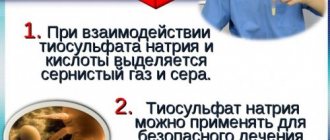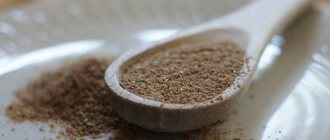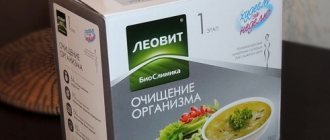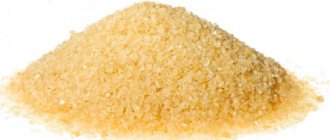The Importance of Detoxifying
The environment does not always have a positive effect on the body: harmful substances and even poisons can enter it along with food, air or through direct contact. The most common source of toxins in everyday life is alcohol, although cases of poisoning caused by the accumulation of heavy metals or organic compounds are not uncommon. One of the effective ways to alleviate the condition or save a life is sodium thiosulfate, which can also be useful in the treatment of allergies, skin diseases and parasitic infections.
Release forms and safety
Sodium thiosulfate powder is colorless, consists of transparent granules or crystals and is odorless. It dissolves very well in water and is usually sold in ampoules of 5 or 10 ml of solution; for each ml there are 300 mg of substance. During storage, the salt may decompose with the release of sulfur, so the solution is stabilized with sodium bicarbonate.
Sodium thiosulfate is non-toxic: it is absolutely contraindicated only in patients with intolerance.
The product has no dangerous side effects; allergic reactions were noted. Experiments on dogs showed a decrease in blood volume with constant administration of the drug; This effect forces one to be more careful in prescribing it for renal failure or diseases of the cardiovascular system. Sometimes injections of the antidote are accompanied by a headache, a feeling of warmth throughout the body, a salty taste in the mouth and prolongation of bleeding time. If the medicine enters the body quickly or in a large dose, the chance of nausea increases. Sodium thiosulfate can also lower blood pressure.
The eyes are often subject to inflammatory processes, which reduce visual acuity and cause discomfort. To relieve unpleasant symptoms, you need to use antiseptic, anti-inflammatory drops, one of which is the medical drug Vizin. Read more in the article: “analogs of Visine eye drops.”
During pregnancy or breastfeeding, the medicine is given only in extreme cases, since safety in such a situation has not been confirmed by research. Reduced kidney efficiency in elderly patients may lead to insufficiently rapid elimination of the resulting compounds from the body; the same applies to patients with renal failure. For children under 14 years of age, sodium thiosulfate is administered in emergency cases.
SODIUM THIOSULPHATE solution for injection. IV 300 mg/ml amp. 10 ml No. 10
The pharmacokinetic parameters of levocetirizine change linearly and practically do not differ from the pharmacokinetics of cetirizine.
Suction.
After oral administration, the drug is quickly and completely absorbed from the gastrointestinal tract. Eating does not affect the completeness of absorption, although its speed decreases. In adults, after a single dose of the drug in a therapeutic dose (5 mg), Cmax in the blood plasma is reached after 0.9 hours and is 270 ng/ml, after a repeated dose of 5 mg - 308 ng/ml. Css is achieved after 2 days.
Distribution.
Levocetirizine is 90% bound to plasma proteins. Vd is 0.4 l/kg. Bioavailability reaches 100%.
Metabolism.
In small quantities (1-histamine receptors, which are metabolized in the liver using the cytochrome system) to form a pharmacologically inactive metabolite.
Due to negligible metabolism and lack of metabolic potential, interaction of levocetirizine with other drugs is unlikely.
Excretion.
In adults, T1/2 is (7.9±1.9) hours; in young children T1/2 is shortened. In adults, the total clearance is 0.63 ml/min/kg. About 85.4% of the administered dose of the drug is excreted unchanged by the kidneys through glomerular filtration and tubular secretion; about 12.9% - through the intestines.
Pharmacokinetics in special groups of patients
Kidney failure.
In patients with renal failure (Cl creatinine T1/2 is prolonged (for example, in patients on hemodialysis, the total clearance is reduced by 80%), which requires a corresponding change in the dosage regimen. Less than 10% of levocetirizine is removed during a standard 4-hour hemodialysis procedure .
Children.
Data from a study of the pharmacokinetics of the drug in 14 children aged 6 to 11 years weighing from 20 to 40 kg with a single oral dose of 5 mg of levocetirizine showed that the Cmax and AUC values are approximately 2 times higher than those in healthy adults when cross-sectioned. control. The average Cmax was 450 ng/ml, Tmax was an average of 1.2 hours, total clearance based on body weight was 30% higher, and T1/2 was 24% shorter in children than the corresponding values in adults.
Retrospective pharmacokinetic analysis
conducted in 324 patients (children aged 1 to 11 years and adults aged 18 to 55 years) who received one or more doses of levocetirizine from 1.25 mg to 30 mg. Data obtained during the analysis showed that taking the drug at a dose of 1.25 mg in children under 5 years of age leads to plasma concentrations corresponding to those in adults when taking 5 mg of the drug once a day.
Elderly patients.
Pharmacokinetic data in elderly patients is limited. When repeated dosing of levocetirizine 30 mg once daily for 6 days in elderly patients (age 65 to 74 years) total clearance was approximately 33% lower than that in younger adults. The distribution of cetirizine racemate has been shown to be more dependent on renal function than on age. This statement may also apply to levocetirizine, because Both drugs, levocetirizine and cetirizine, are excreted primarily in the urine.
Therefore, in elderly patients, the dose of levocetirizine should be adjusted depending on renal function.
Mechanisms of action and types of effects
In the body, sodium thiosulfate is rapidly distributed into the extracellular fluid. About half of it is excreted unchanged, the rest reacts with toxins. In case of acute poisoning, rapid administration of the antidote intravenously can save the patient: speed is especially important in case of cyanide intoxication. Such a case requires careful monitoring of the patient for a day or two: if the symptoms of poisoning return, Sodium Thiosulfate is used in half the dose. The mechanism of action is usually associated with the conversion of toxic salts into non-toxic ones, after which the reaction products leave the body. There are several target poisons.
- Cyanides. Sodium thiosulfate serves as a catalyst for the natural reaction that converts cyanide to thiocyanate. The medicine supplies sulfur ions, which help the enzyme rhodonase-thiosulfate cyanide-seratransferase to quickly neutralize the poison.
- Arsenic, mercury, lead form sulfites.
- Bromine and iodine salts become non-toxic compounds.
- Aniline, benzene, phenols.
Sodium thiosulfate not only cleanses the body of toxins, but is also considered an antioxidant that protects cells from free radicals. The product reduces inflammation, improves the condition of skin and hair, and has a choleretic, diuretic and laxative effect. The medicine is sometimes recommended for arthritis, neuralgia, allergies and rashes: for example, acne.
If a man has problems with sexual function or urinary tract disorders, it is recommended to use Tadalafil North Star. If there are contraindications, the doctor will recommend analogs that have a lower price and identical quality. Read more in the article: “how to take tadalafil without interruption.”
Sodium thiosulfate for oral administration
Most often, the product is used internally for comprehensive cleansing of the entire body or weight loss. A 10% solution is suitable for this purpose: it is convenient to prepare it from the contents of ampoules. The daily dose is either one ampoule of a 30% solution per 10 ml, or 2-3 grams of powder.
For the best result, meat and dairy should be excluded from the diet during treatment, and drinking plenty of fluids will help avoid dehydration from the diuretic effect.
The contents of the ampoule are diluted in a glass of water: this will not only reduce the concentration of the solution, but also get rid of its bitter taste.
The course of such treatment ranges from 10 to 12 days. Can be taken once or twice a day.
- Once - the entire dose of the drug is drunk in the evening, 2 hours after dinner. The time is determined by the laxative effect of sodium thiosulfate: if everything is done correctly, the urge will arise only in the morning.
- Twice a day is considered an effective way to improve liver health. The morning portion is drunk before breakfast, the evening portion is similar to the previous option. Sometimes the solution is divided into two parts, but it is better to prepare it before use. To relieve the symptoms of psoriasis, the medicine is taken in the morning and evening before meals, and three courses of treatment are carried out per year.
At the beginning of the course, sodium thiosulfate may cause skin irritation and rash. If diarrhea occurs, it is better not to continue the procedure. Some contraindications for cleansing may include anemia, gallstones, diabetes, ulcers and oncology.
Kondakova method
For patients ready to use Sodium Thiosulfate, instructions for use for cleansing cannot be complete without mentioning Valentina Kondakova. It was she who tried taking the product internally and achieved positive results. The recommendations of the candidate of medical sciences also contain special advice:
- an enema on the eve of taking thiosulfate will help remove some of the harmful substances and make the course more effective;
- the dosage depends on weight and includes 10 or 20 ml of a 30% solution of the drug per 100 ml of water;
- take the product once a day, at night, two hours after meals;
- You can distract yourself from the unpleasant taste with a slice of lemon;
- The effect of the course will be improved by a mixture of orange and grapefruit juices with the addition of lemon juice, which after preparation must be diluted with water by half.
The duration of cleaning also does not exceed 10-12 days. It can be carried out no more often than once every 4 months. The method - like the idea of cleansing the body with thiosulfate in general - has opponents, but there are also many reviews from people who noticed real results within a couple of days after starting to take it. Some believe that dry cleaning works not because of thiosulfate's ability to remove poisons, but because of its laxative effect.
Sodium thiosulfate, instructions for use
It is used externally, intravenously and orally.
External use is indicated for scabies . According to the instructions for sodium thiosulfate, a 60% solution should be rubbed into the skin of the limbs and torso, and then, when it dries, moisten the treated surfaces with a 6% hydrochloric acid solution.
Sodium thiosulfate is prescribed intravenously and orally to cleanse the body during intoxication.
Sodium thiosulfate is administered intravenously as a 30% solution. The dose varies from 5 to 50 ml and depends on the severity of intoxication and the type of toxic substance.
For oral administration use a 10% solution. A single dose is 2-3 grams of sodium thiosulfate.
Sodium thiosulfate in gynecology
For gynecological pathologies, the drug is used, as a rule, as an addition to the main treatment.
Sodium thiosulfate in gynecology is used intravenously as part of endocrine infertility treatment programs. In this case, the patient is also prescribed Actovegin intramuscularly, plasmapheresis and transorbital electrophoresis of nicotinic acid.
To eliminate cysts in the ovaries, the product is used in combination with Dimexide , Vishnevsky ointment and Diclofenac .
For genital tuberculosis, it is included in nonspecific therapy: the patient is prescribed enzyme preparations ( ronidase or lidase ), antioxidants (vitamin E) and sodium thiosulfate. The latter is injected into a vein, 10 ml every other day or once or twice a day. During the course of treatment, a woman should receive from 40 to 50 infusions of the drug.
In some cases, sodium thiosulfate is used in the form of microenemas. Some doctors recommend this method of treatment for adhesions in the pelvis and inflammatory diseases of the reproductive system.
The procedure is carried out using a 10% solution. Single dose - 30-50 ml. Before injection into the anus, the solution is heated to a temperature of 37-40ºC in a water bath. It should be remembered that this is not a cleansing enema, therefore, the drug must be completely absorbed into the body through the intestinal mucosa.
Reviews allow us to conclude that the use of the drug for endometriosis as an anti-inflammatory and absorbable agent is a good alternative to treatment with hormonal drugs.
An important property of the drug is the ability to prevent the development of allergic reactions that may occur during the complex treatment of certain female diseases.
The versatility of using sodium thiosulfate allows you to choose the most suitable method of application in each specific case: in the form of a microenema, intravenously or during physiotherapeutic procedures (electrophoresis).
Sodium thiosulfate for psoriasis
For psoriasis, the advisability of using sodium thiosulfate is explained by the fact that the drug allows you to thoroughly cleanse the body, and this in turn helps to strengthen the immune system and alleviate the course of most chronic diseases.
Reviews from people who took the solution indicate a significant improvement in their condition. Some patients claim that by taking sodium thiosulfate, they were able to completely get rid of psoriasis .
However, given the chronic nature of the disease, it can be assumed that we are talking about achieving stable remission.
How does the drug work? Firstly, when entering the intestines, sodium thiosulfate attracts waste products and toxic substances that enter the digestive tract from lymph, blood, intercellular and interstitial fluid.
Secondly, due to the presence of sulfur molecules, which have a pronounced reducing effect, it binds heavy metals well.
Thirdly, sodium thiosulfate enhances intestinal motility and helps to liquefy its contents, thereby having a laxative effect and accelerating the removal of toxins from the body. As a result, the patient’s internal organs and systems begin to function better.
In addition, the drug slows down the absorption of toxic substances through the intestinal mucosa and prevents them from entering the blood.
The course of treatment of psoriasis with sodium thiosulfate lasts from 5 to 12 days. The daily dose is 10-20 ml (depending on the tolerability of the drug and the patient’s body weight).
Before use, the solution is diluted in 100 ml of water. To improve the unpleasant taste, you can add a small amount of lemon juice. It is better to take the medicine at night. If the laxative effect is pronounced, the dose is reduced to 10 ml/day.
How to take sodium thiosulfate?
The drug is taken internally to cleanse the blood and lymph. This treatment can improve your overall well-being, as well as the condition of your hair, nails and skin, clear your head, get rid of depression and eliminate many allergic reactions.
To cleanse the body, it is recommended to drink the drug for 10 days. Single dose - 0.5 ampoule. Before use, the solution is diluted in 100 ml of water.
The first time the drug is taken 30-60 minutes before breakfast, the second - 30-60 minutes before dinner or 2 hours after it.
Use of the drug in ampoules
Most often, this form of release is prescribed by doctors, and the prerequisites for this are usually poisoning. It is difficult to administer the medicine yourself: for a drug such as Sodium Thiosulfate in ampoules, the instructions for use include requirements for dosage, rate of entry into the body, as well as compatibility. The product is suitable not only as an antidote: its ability to neutralize toxins and relieve inflammation is used in a variety of cases.
- Acute allergic reactions and rashes. The result comes within a week.
- In gynecology, the drug is involved in the treatment of endometriosis - the growth of uterine tissue outside of it. It works for ovarian cysts, genital tuberculosis and inflammation leading to infertility. As with allergies, Sodium Thiosulfate is prescribed in conjunction with other medications. Main effect: reduction of inflammation, including during treatment with hormonal drugs.
- For psoriasis, injections of a 30% solution are given over 5-10 days. This cannot cure the disease completely, but it can stop skin damage.
- Neuralgia and arthritis can also be alleviated with sodium thiosulfate injections.
The drug should be administered intravenously slowly; 50 ml of solution is prescribed per adult. For children, the dose is recalculated based on the child’s weight: 250 mg of the substance per kg. The product is incompatible with nitrates, potassium permanganate and hydroxocobalamin.
Treatment of alcoholism
The use of the drug for alcoholism deserves special mention. For delirium tremens, Sodium Thiosulfate can be administered as part of a complex of drugs for detoxification, but the medicine is most famous for its ability to cause aversion to strong drinks. Taking it together with alcohol causes dizziness, vomiting, tachycardia, sweating, tremors, anxiety and stomach upset.
After administration of Sodium Thiosulfate, the patient is asked to drink 30 g of vodka to demonstrate the symptoms awaiting him.
Side effects of the drug in combination with alcohol cause the patient to reflexively reject alcohol.
In order to form a stable desire in a person to lead a sober lifestyle, he is infused with a 30% solution of the drug for 16-20 days, gradually switching to injections three times a week and once a month. Other courses are also possible: some patients show resistance even to such radical treatment.
Sodium thiosulfate intravenously and alcohol
One of the most effective ways to get rid of alcohol addiction is the so-called conditioned reflex therapy (conditioned reflex therapy). Treatment boils down to the fact that the patient is given drugs that, in combination with alcohol, cause a lot of unpleasant sensations: nausea, vomiting, hand tremors, cough, heart rhythm disturbances, sweating, etc. As a result, a stable aversion to alcohol is formed.
However, most drugs that are used to treat alcoholism have contraindications, and their use is often accompanied by adverse reactions from the kidneys and liver.
In comparison with such agents, sodium thiosulfate is absolutely non-toxic. The only contraindication to its use is individual intolerance.
The drug promotes the formation of negative reflexes to alcoholic drinks from the nervous system and gastrointestinal tract, but does not cause any harm to the body.
It usually takes 16 to 20 days to break a bad habit. Treatment is carried out on an outpatient basis every day.
Sodium thiosulfate is administered intravenously, the dose is selected individually. Immediately after completion of the procedure, the patient is given 20-30 g of vodka to drink to monitor his reaction to alcohol intake.
As a rule, the first unpleasant sensations occur after 2-3 days of treatment. Thus, a stable aversion to alcohol gradually develops.
16-20 days after the start of the course, the number of injections is reduced to three times a week and then - gradually - to once a month.
Treatment with hyposulfite has no age restrictions. At the same time, relapses are not observed in patients who have completed the full course of treatment. The drug is easily tolerated even by older people with various somatic diseases.
External use of Sodium Thiosulfate
The anti-inflammatory effect is also shown by the product when applied to the skin: with a solution of sodium thiosulfate, you can treat psoriasis plaques and sites of allergic reactions, make lotions and compresses. The substance is often used to treat scabies: a solution with a concentration of 60% is rubbed into the skin, waited until it dries to form small crystals, and then treated with 6% hydrochloric acid.
Treatment of scabies is based on the conversion of sodium thiosulfate under the influence of acid into sulfur and sulfur dioxide, which kill the causative agent of the disease.
The external remedy not only kills scabies mites, but also soothes the itching.
For treatment to be effective, you should avoid washing for a while after the procedure. Usually you have to wait 3 days.
For the treatment of gynecological diseases, instead of injections, microenemas are sometimes prescribed. In case of an inflammatory process or adhesions, prepare a 10% solution of sodium thiosulfate, heat it to 37-40 ° C and inject 30-50 ml of the product into the rectum. Course features are selected individually.
Sodium thiosulfate cleansing the body, how to take it. “Dry cleaning” for the body: cheap and cheerful
Having posted material about such a popular cheap (and not recognized in the West) medicine - brilliant green, I wanted to remind you about another cheap drug with a truly unique spectrum of action.
At a time when the global pharmaceutical industry is throwing more and more new medicines onto the market, and for some reason people are getting sick more and more, the eye involuntarily turns to undeservedly forgotten, but effective and time-tested medicines. In particular, we will talk about sodium thiosulfate. This chemical compound is colorless, transparent granules or odorless crystals, salty-bitter in taste, very easily soluble in water (1:1), practically insoluble in alcohol. People of the older generation who were engaged in photography and lovingly developed photographic films themselves and printed photographs remember very well that sodium thiosulfate was part of the fixer.
In addition, sodium thiosulfate is widely used as a chemical reagent for the determination of iodine (iodometry), in the textile industry and other areas. And in medicine, sodium thiosulfate is used as a desensitizing, anti-inflammatory and antitoxic drug. The antitoxic effect is based on the unique ability of this drug to form non-toxic compounds - sulfites with arsenic, thallium, mercury, lead. It has antidote properties against aniline, benzene, iodine, bromine, copper, hydrocyanic acid, sublimate, and phenols.
Sodium thiosulfate is administered mainly intravenously (in the form of a 10-30% solution) for allergic diseases, arthritis, dermatoses and poisoning. Externally - for the treatment of scabies (anti-scabies activity is due to the ability to decompose in an acidic environment with the formation of sulfur and sulfur dioxide, which have a damaging effect on the scabies mite and its eggs).
– remember this. We'll need this later!!
The effect of sodium thiosulfate on internal organs and systems can be compared to real dry cleaning, after which many diseases disappear or their course is significantly alleviated. The body, freed from the “dirt” that has accumulated over the years, gratefully copes with many ailments on its own.
Pharmacy sodium thiosulfate -30% solution for injection, which is used in medicine for poisoning of the body, as an antidote, diluted with water, can be successfully used internally to cleanse the blood and lymph, which I personally have done repeatedly and my friends have read about this advice in the journal “Chemistry and Life”.
Substitutes for Sodium Thiosulfate
For Sodium Thiosulfate, only group analogues are known - drugs with other active ingredients that can be used in similar cases. Depending on the indication for use, the drug can be replaced with drugs with different mechanisms of action. Most often, such options significantly exceed the cost of a simple and common powder, but their suitability for restoring and protecting the body may be higher.
| A drug | Active substance | Manufacturer | Price |
| Sodium Thiosulfate solution for intravenous administration 300 mg/ml | Sodium thiosulfate | SYNTHEZ JSC (Russia) | 80 rub. |
| Unithiol solution for intramuscular and subcutaneous administration 50 mg/ml | Unithiol | KURSK BIOFACTORY – FKP (Russia) | 457 rub. |
| Zorex capsules 250 mg + 10 mg | Unithiol Calcium pantothenate | VALENTA PHARMACEUTIKA PJSC (Russia) | 337 rub. |
| Methionine film-coated tablets, 250 mg | Methionine | ABVA RUS JSC (Russia) | 69 rub. |
| Cuprenil film-coated tablets, 250 mg | Penicillamine | Teva Pharmaceutical Industries Ltd. (Israel) | 1267 rub. |
| Glathion powder for the preparation of solution for intravenous and intramuscular administration | Glutathione | FARMLUX LLC (Russia) | 6850 rub. |
Antidotes used for poisoning with heavy metals and cyanides can replace Sodium Thiosulfate for emergency treatment or as part of complex therapy. Glutathione-based products can help the body recover and remove harmful substances, and among inexpensive drugs for health, you can choose methionine to improve liver function. Substitutes include both intravenous medications and tablets.
Features of substitutes
Some of the examples are effective for alcoholism, others for heavy metal poisoning. Unlike Sodium Thiosulfate, which is more often used to develop an aversion to alcohol, substitutes are more likely aimed at reducing the destructive activity of ethyl alcohol in the body. The additional effects of some antidotes make them prescribed for autoimmune diseases.
- Unithiol forms complexes with ethanol breakdown products, removes heavy metal ions, and helps with cardiac glycoside poisoning and diabetic neuropathy. Injected into a vein or under the skin, a single dose is 250 mg (one ampoule).
- Zorex has a similar effect; calcium pantothenate improves the capabilities of unithiol. Used for poisoning, treating hangovers and chronic alcoholism. Dosed individually.
- Cuprenil, due to penicillamine, forms complexes with metal ions and relieves inflammation. Due to its effect on the immune system, it is used for rheumatoid arthritis and systemic scleroderma; used for the deposition of cystine stones in the kidneys. The tablets are taken half an hour before meals or 2 hours after them; The dosage depends on the case and age.
The difficulty of selecting a dosage is associated with various forms of poisoning or illness, the age and tolerance of the patient. Zorex may be the most effective for alcohol intoxication. Its advantage is a more complex composition.
Improve your health by protecting your liver
You can replace cleaning with Sodium Thiosulfate with the help of liver protectors or products that help improve its functioning. In turn, good liver health helps the entire body cope with toxins. Examples would be Glathion injections or Methionine tablets.
- Glathion neutralizes toxins by binding them or converting them into other substances, protects hepatocytes and restores their activity; administered intravenously for liver diseases in courses of 14-30 days. The drug is expensive, but it is suitable for almost all adults and does not cause dangerous side effects.
- Methionine is an amino acid tablet that can support the liver during fatty infiltration. Used to prevent exposure to alcohol, arsenic, chloroform and benzene. Tablets should not be taken in case of viral hepatitis, severe liver failure and children under 6 years of age. You should drink in courses: for adults - 0.5-1.5 grams per day half an hour or an hour before meals.
Methionine is in the same price range as sodium thiosulfate, but has more limited options. Glation acts in several directions at once, but its price exceeds other replacement products. For the same purpose, hepatoprotectors can be used: Essentiale, Phosphogliv, Heptral.
Body cleansing and antidote
In official medicine, Sodium Thiosulfate is rather known as a drug for the treatment of acute poisoning and a remedy against alcoholism. Most often it is introduced into the body through a vein; The medicine is applied externally either to reduce inflammation or to get rid of scabies. A method of healing by taking Sodium Thiosulfate orally, which is also unusual for some doctors, is also popular: some observations have proven that in this way it is possible to cleanse the body of toxins and improve well-being. The contents of the ampoule with the drug are diluted in water and drunk once or twice a day for 10-12 days. Despite the safety of the product, cleaning should not be done too often.
If necessary, in case of acute poisoning, you can replace Sodium Thiosulfate with another antidote, depending on the type of toxin. It is also possible to take means to protect and restore the liver, which also heals the body. Most of the replacement costs are significantly more expensive.
Reviews of sodium thiosulfate
Reviews of intravenous sodium thiosulfate indicate the high effectiveness of the drug in cases of poisoning and in cases where it is used to treat alcohol dependence.
Good reviews on forums are also left by those who were forced to use the drug to treat psoriasis, allergic diseases and diseases of the female genital area.
In gynecology, sodium thiosulfate is used to treat endometriosis, endocrine infertility and a number of inflammatory diseases. Moreover, in some cases the drug is prescribed to be administered intravenously, in some - using electrophoresis or in the form of microenemas.
On the Internet you can also find calls for using the product for weight loss and cleansing the body as a whole. However, reviews from those who took sodium thiosulfate indicate that such treatment methods do not produce any special results. The maximum that most patients can achieve is bowel cleansing.










